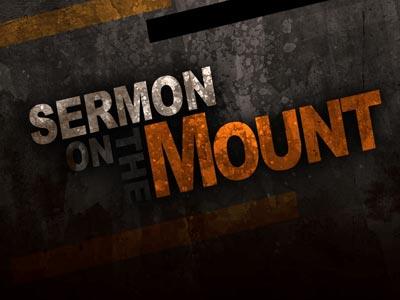-
Intro To The Sermon On The Mount Series
Contributed by Keith Foskey on Nov 28, 2017 (message contributor)
Summary: This begins the series on the Sermon on the Mount.
Series: The Sermon on the Mount
Title: Introduction to the Sermon on the Mount
Text: Matthew 5:1-2
This series has been a long time coming. I have actually been quite fearful to do this message because of my fear that I could not do this portion of Scripture justice. To preach a sermon on the greatest sermon ever preached is a daunting task. So it is with fear and trepidation that I am finally wading into this series, and I ask for your prayers as I do so.
Why do I believe this message is important?
I believe that in the American church today there has been allowed a new type of “lord-less Christianity.”
Churches and denominations are constantly churning out people who say they love Jesus, but have no affection for His commands.
And He said, “If you love me, you will keep my commandments.”
His sermon on the mount is His expression of the highest form of personal and ethical righteousness.
It is an unapologetically high bar.
It makes no excuse or concession for its high demands, and as such it goes highly ignored by the modernists who see its commands as way too lofty to ever be considered practical.
NOTE: Some believe it is not even meant for us, but that it was intended to describe a future utopia which will only be known in a coming millennial kingdom.
But beloved, I believe these words do have great value for us today.
Jesus is not in them teaching us how to be saved, but rather what a righteous life looks like.
And those who have been saved by grace through faith should have an internal longing for the righteousness Christ describes.
This morning we are going to spend time examining just the first two verses which lead up to the Sermon on the Mount, to set the stage for all that we will learn in the coming months.
READ: Matthews 5:1-2
It seems as if I have cut off right before we got to the lesson, but the reality is that we have a lot in these first two verses which we can study to set the stage for this series.
I want us to look at the significance of three things we see in these first few verses...
1/ The Location Jesus goes to for the sermon
2/ The Position Jesus assumes for the sermon
3/ The Introduction Jesus gives for the sermon
THE LOCATION
Matthew 5:1a “Seeing the crowds, he went up on the mountain,...”
Sometimes things which may seem somewhat insignificant in our reading can really be pregnant with symbolism and meaning.
It is obvious that this is the case with Jesus choosing to go up on a mountain to provide the first and most public of His five discourses in the Gospel of Matthew.
It is not just that He is elevating Himself so as to be seen more easily by the crown.
Instead, He is elevating Himself to draw attention to the height of importance of His discourse, and to bring to the minds of his hearers another great discourse which also was given from atop a mountain.
Where else in the Bible do we find such a powerful discourse being given from a mountain?
When God, from the top of Mount Sinai, delivered the decalogue (Ten Commandments) to Moses.
There God delivered His Word of Law to the people.
And it was then brought to them by His servant Moses.
NOTE: It is obvious that the Bible makes a clear connection between Jesus and Moses.
John 1:17 ESV “For the law was given through Moses; grace and truth came through Jesus Christ.”
Moses stood before the people of God, from the side of Mt. Sinai, and with a powerful voice gave the people God’s Law.
Jesus would, some 1500 years later, stand upon a similar mountain, before the descendants of those same people of God, and proclaim to them the proper interpretation of that Law.
Where Moses gave the LETTER of the Law...
Jesus gave us the SPIRIT of the Law.
What Moses said from the mountain was true and godly.
But it had been misused, misunderstood, and misrepresented.
So here is Jesus, from a mountain, proclaiming to the people the whole truth of the Law which Moses had given them.
Remember, Jesus’ purpose was not to change the Law.
But His purpose was to fulfill the Law.
And the first step in that fulfillment was to bring a proper interpretation of it.
SIDE NOTE: Controversy between the Discourse in Matthew and the Discourse in Luke.
In the Gospel of Luke, Jesus gives a discourse which is often compared to the Sermon on the Mount.
In fact, some people believe it to be the same message, just recorded by a different Gospel writer with different focuses.

 Sermon Central
Sermon Central



